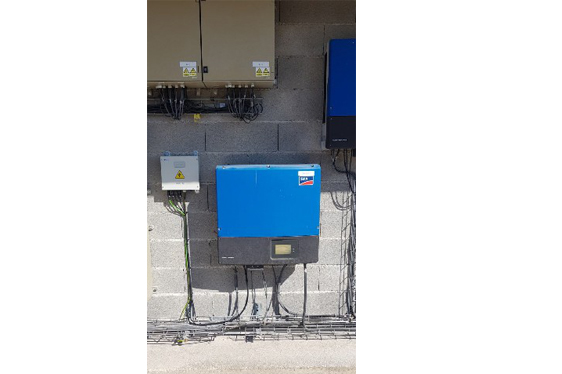Feb 25, 2021
EMINENCE II AIMARGUES Gallargues photovoltaic power station is located in southern France, its debugging success in 2013, and operate smoothly. After five years of unending work, photovoltaic module performance has declined and power generation has descended. After a variety of tests and trouble shootings, the power station has a potential PID problem. Fortunately, they find the Zenergy PID offset box. During the one-week PID offset box operation, the power generation effect of the power station was significantly improved, which successfully protected the photovoltaic power station and investors' income.
PID stands for Potential Induced Degradation, which refers to the potential induced degradation (also called potential induced degradation) of a module. When the PID phenomenon is serious, it can cause a module to lose more than 50% of its power, thus affecting the power output of the whole string. The PID phenomenon is most likely to occur in coastal areas with high temperatures, high humidity and high salinity.
PID testing is carried out in two ways to accelerate ageing.
1. At a specific temperature and humidity, the glass surface of the module is covered with aluminium foil, copper foil or wet cloth, and a voltage is applied between the output of the module and the surface covering for a certain period of time.
2. 1000V DC is applied to the module output and aluminium frame for 96 hours at 85% humidity 85°C or 60°C or 85°C.
Before testing in both ways, the modules are tested for power and wet leakage and EL imaged. After ageing, the power and wet leakage tests and EL imaging were performed again. The results before and after the test are compared to give a picture of what happens to the PID under the set conditions. The first method is more often used in experimental facilities, while the latter is more often used by PV module plants. When the PID phenomenon occurs, some of the cells can be seen to be blackened from the EL imaging.

1. the maximum power to initial value ratio, attenuation does not exceed 5%.
2. No visual failure.
3. Wet leakage current test.
4. Functional integrity of the module at the end of the test.
PID can be prevented in three ways: system, module and battery.
This can be done either by grounding the negative terminal of the module in series or by applying a positive voltage between the module and earth at night. Another possibility is that with the use of microinverters, the system voltage is reduced and the resulting PID effect may be negligible.
As humidity is a factor in the generation of the PID phenomenon, the way in which the package is packaged is also critical. Optimising the EVA production process, screening raw materials and optimising the ratio of raw materials can improve the effect of EVA adhesive film on the anti-PID of the module.
The cell itself is undoubtedly the most important key factor in resisting PID. Changes to the emitter and SiN reflective layer can be considered, but both improvements bring changes in power generation efficiency and an increase in additional equipment.
Zenergy Tech Co., Ltd. is a team with 10-year-experience in the PV field and relevant power electronic equipment R&D ability. Over the years we have been devoted to the rational utilization of renewable energy such as Multi-source hybrid system design and photovoltaic (PV) and implementation solution. Based on a deep understanding of micropower grid, our comprehensive solution is not limited to PV itself but from the perspective of the whole power supply system, to provide more reliable and efficient power solutions for the owners. Welcome to contact us.
How Do Solar Panels Help The Environment?
Nov. 23, 2021
Follow Us
Navigation